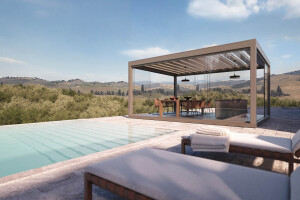A NATURAL SPACE AND PRESERVED TO THE INHABITANTS OF THE COMMUNE
Completed in September 2016, the development of the 7 hectares of the Maharin plain is exemplary both from a hydraulic and environmental point of view as well as from a landscape point of view.
The development of the plain necessitated the use of plant engineering and ecological engineering techniques as well as local and ancestral know-how. To preserve the biodiversity and to respond to the flood risks related to the creek, it has been reprofiled, valleys and drainage ditches have been created to channel the flow over the entire site, retention structures and ponds. Expansion was built, and 14 biodiversity refuge islands were built on a total of 1.8 hectares.
The development project of the Maharin Plain made it possible to respond to contradictory ambitions for the preservation of biodiversity and the appropriation of public spaces by the inhabitants. The balance thus achieved makes this landscaping and ecological development a new centrality of the city of Anglet, in the heart of the Montbrun district, whose residential dominance gives all the more meaning to the new and revealed wealth of site.
LANDSCAPING FOR ALL
The sum of the challenges of the project of development of the plain of Maharin is summarized around the following objectives:
• Federate
Enter the Maharin plain in a geographic furrow of urban scale. Reveal to the inhabitants of different neighborhoods the unsuspected existence of a rare and precious natural environment
• Preserve
The reconquest of the site proposes concentric circles protecting the natural and preserved heart of the site.
The project reactivates the hydraulic function of the wet plain, focusing on the landscape value of a floodplain.
To preserve a balance between the different habitats: that of the men and that of a fauna already established on the plain.
• Connect and Browse
The project seeks to make possible new uses and to create new traversing routes, a natural environment in the heart of the city.
• Share
The project proposes a series of places of transition arranged in contact with the habitat, existing as created: shared spaces conceived as mediations between public and private
































